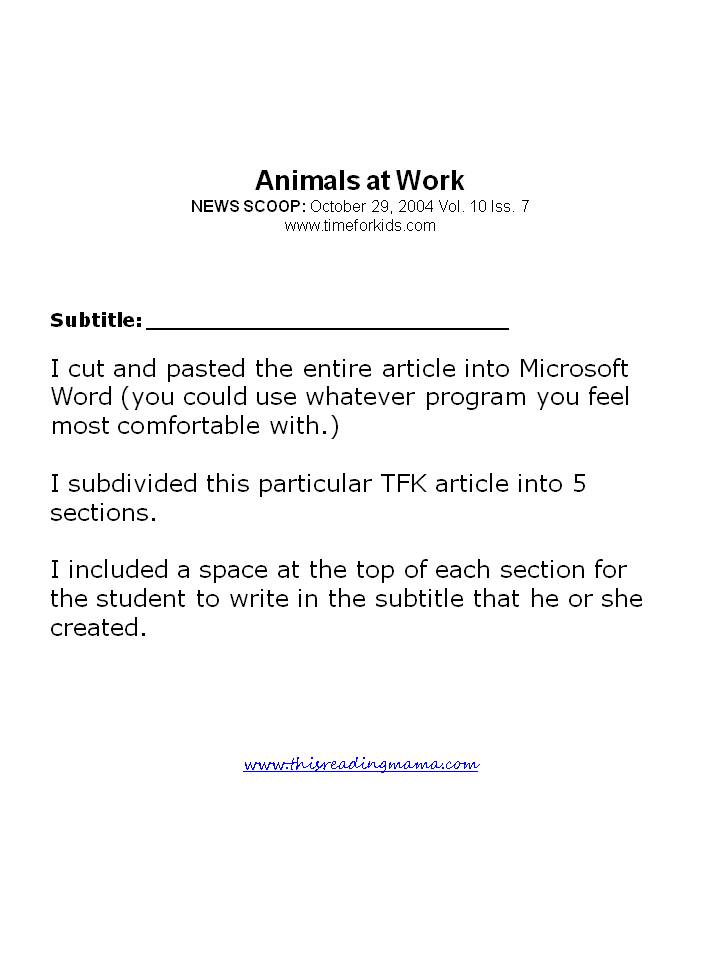Last week, I shared an activity for using nonficiton text features to determine importance within sections of nonfiction text. Students chose from a pre-selected list which subtitle each section should get.
Today, I want to share how to take this activity a step further:
Before Reading: I went over the text I had assigned the student for independent work (from Part 2) and listened to his choices of subtitles. More importantly, I wanted to hear WHY he selected that subtitle.
During Reading: The texts I used for this activity came from Time for Kids. Unfortunately, they have re-done their website, making it harder for mamas and teachers to find appropriate texts for our kids. Before they redesigned their site, they had articles listed by grade/reading level, but no longer do…very disappointed! Regardless of that, here is what I did with the article I chose:
Prep Work*: I took an article appropriate for my student (I chose it by reading level of the text and subject) and subdivided it into sections. Some of the articles are already subdivided, with subtitles. Some of them could be subdivided even further for this activity.
*The prep work takes longer now that TFK has redesigned their website, but if you find an article you want to use that seems it may be too easy/too hard for your child, here’s an idea: After you’ve cut and pasted it, go through the text and re-write it a bit to better fit your child…either adding more difficult words or taking out certain words or phrases and replacing them with more developmentally appropriate word choices.
See the example below:
 These are the steps I first modeled, then asked the student to follow in choosing a subtitle for each section:
These are the steps I first modeled, then asked the student to follow in choosing a subtitle for each section:
1. Read the entire section.
2. Read each sentence (one at a time), highlighting words or phrases that seem important.
3. Go back and silently (or out loud) re-read what is highlighted.
4. Decide what this section is all about (the main idea) and create your own subtitle to fit it.
After Reading (the entire article): We went back to the overall title of the article and I asked the student to evaluate whether or not he thought the title reflected what the article was really all about. In some cases, students renamed the articles; and in other cases, they felt the title already chosen was a reflective of the article.
Extension (Independent Work/Homework): I picked another article from TFK, subdivided it, and asked the student to do the same thing we had done together. Other nonfiction texts would work just as well.
Next week, I plan on moving on to nonfiction text structures. Anyone care to join me? 🙂
~Becky
I love these lessons you have put together! Very well done! I haven’t gotten into this for the current school year since it isn’t appropriate for the age group I am currently working with, but I wanted to share with you how your lessons brought back me back to when I was recording for my National Board Certification!
Time For Kids does still have articles, but you have to have a subscription to their website in order to get to their printables now. They are no longer free :o(
I wondered about that. You can still get some of their articles, if you DIG in there and keep trying…very frustrating for teachers, who already don’t get paid enough as it is!!
Got it. Thanks!